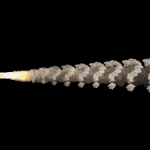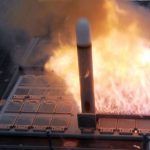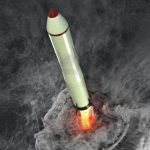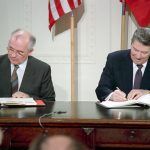On missile defense, verify to trust
By Ivanka Barzashka | January 6, 2014

President Obama wants to negotiate “bold reductions” to US and Russian nuclear forces, while building a missile defense system to counter a limited attack from potential adversaries like Iran and North Korea. But Moscow worries that evolving US and NATO defenses, mixed with nuclear and conventional precision-strike weapons, could eventually undermine Russia’s nuclear deterrent. Until its concerns are addressed, Russia won’t agree to a new arms control treaty and has threatened countermeasures.
To resolve the standoff, various proposals for cooperation have been made, but prospects for an agreement have seemed grim. While fundamental differences remain, President Putin agreed with President Obama in June that “what we certainly must and can do in [the missile defense] area is make all our actions more open and transparent.” Transparency is a necessary condition for the success of ambitious cooperative proposals that could increase both US and Russian security. For example, coordinating a joint response against ballistic missile attacks from third countries—the core of NATO’s offer to Russia—is difficult if either side believes the other’s defenses could be used against it.
A transparency regime consisting of reciprocal exchanges of information on missile defense capability—coupled with verification measures but without explicit limits on the system’s capabilities—could provide mutual assured stability. Although various transparency measures have been suggested in the past, the idea of verifying declarations of missile defense capabilities has not been thoroughly explored. As part of a comprehensive transparency regime, verification could help resolve the standoff on missile defense.
Legal guarantees versus political assurances. In its Chicago summit in May 2013, NATO declared that its missile defenses are not aimed at Russia and would not threaten strategic stability, but political assurances haven’t been enough for Moscow. Russia wants legal guarantees—effectively, a missile-defense arms control treaty that is a non-starter in the US Senate.
A treaty per se cannot be the objective—after all, the United States signed but later abrogated the Anti-Ballistic Missile Treaty. The kinds of things that arms control treaties communicate, however, are truly valuable: a long-term commitment acknowledging mutual strategic concerns, transparency through agreed regular exchanges of technical data, a mechanism for verifying these data, a mechanism for resolving differences, and, fundamentally, the trust and security that these practices create. A comprehensive missile-defense transparency regime, whether part of a US-Russian treaty, an Obama-Putin executive agreement, or a NATO-Russia Council agreement, could achieve all that.
Verifiable data exchanges are widely recognized as perhaps the most valuable aspect of New START. Rose Gottemoeller, then an assistant secretary at the US State Department, told the Senate in 2012 that “accurate and timely knowledge of each other’s nuclear forces helps to prevent the risks of misunderstandings, mistrust, and worst-case analysis and policy making.”
Republican Senator Jon Kyl, who opposed further nuclear reductions, said the START verification regime provided a “significant source of information” that allowed the United States to understand Russian strategic forces. Similarly, regular reciprocal data exchanges on missile defense capability could increase transparency, build trust, and advance stability.
Technical criteria versus limiting capability. No one believes that the US missile-defense system today threatens Russia’s nuclear deterrent. Russian officials say they have demonstrated legitimate concerns about future developments and have asked for “specific technical military criteria” that would allow them to judge “to what extent US and NATO action in the missile defense area corresponds to their declarations and steps.” The United States insists that its system, as planned, has no capability to intercept Russian missiles, but Washington would not accept any limits to what kind of systems it deploys and in what numbers and locations.
Defenses that work could, in principle, threaten strategic stability. Strategic stability is a complex mix of politics, capability, and perceptions, and because intentions can change, capability matters. Objective technical criteria help distinguish rhetoric from fact. Transparency measures with a technical focus, such as NATO’s proposal for a regular exchange of information on capability and a US offer to jointly assess whether the system could target Russia, have floundered due to the two sides’ fundamental disagreement over legal limits.
Though specifying technical criteria carries the aura of an arms control treaty, it is not the same as agreeing to limits. The former are performance parameters that determine a missile-defense system’s capability against an opponent’s nuclear forces and could thereby affect strategic stability. The latter constrain those performance parameters to an agreed range.
An agreement to declare and verify missile-defense capability—without limiting that capability—would be based on objective technical criteria. Declarations could include locations, numbers, and types of interceptors, as well as certain key performance characteristics, like speed. Identifying and reporting technical specifications would acknowledge, albeit indirectly, Russia’s core concern—that defenses and offenses are linked.
A verification regime that employs a combination of national technical means and onsite inspections could provide credible assurances that declarations reflect actual capability and that deployments square with the stated threat. The State Department invited Russia to observe one missile-defense flight test to verify interceptor speeds. (At the time, Russia didn’t see much value in the offer because it was not part of a comprehensive regime.) Providing Russian inspectors access to sites—an established practice under the Intermediate Nuclear Forces (INF) and START treaties—could also allow Russia to confirm numbers and types of launchers. Russian inspectors visited an interceptor site in California in August. Existing radiation detection techniques, such as those used under New START to confirm the absence of nuclear warheads on missiles and heavy bombers, could be used to rule out nuclear-armed missile-defense interceptors. New measures might have to be developed to verify declarations on dual-capable Aegis ships.
An explicit agreement on limits is not necessary for their enforcement. Each side can unilaterally react to deployments it sees as threatening even without an agreement, enshrined in a treaty, that lays out what capability constitutes a red line. By clearly communicating its own red lines and the possible consequences of American defiance, Moscow is de facto enforcing its limits to US missile-defense capability. And whatever the limits and worries about them, reactions should be based on verified information and not worst-case military planning.
Reciprocity. Just as Russian military planners fear US defenses, US military planners may one day fear Russia’s. Moscow is modernizing its nuclear offensive capabilities and making investments in what it calls “aerospace” defense. Russian missile-defense countermeasures are already worrying US hawks.
Recently, the conservative Washington Times, citing US intelligence officials, accused Russia of violating the INF treaty when testing a long-range missile against defenses on June 6.
Moscow places the burden of proof on the United States to demonstrate that missile defenses are not aimed at Russia. Yet the Russians haven’t been especially forthcoming about their own plans, which they have explicitly stated are meant to counter American deployments.
Reciprocity should be a key element of any cooperative arrangement. A transparency regime that requires all parties to declare and verify missile-defense capability would provide the United States and Russia a regular and credible means for monitoring the other side’s military developments.
Reciprocity could also help avoid tough questions. Because the same measures would apply to Russia, Washington could counter an impossibly high demand for assurances or intrusive inspections by simply reversing the question.
Domestic accountability. The Obama administration has given ad hoc briefings to Russian officials on US missile-defense capability and has discussed the possibility of sharing test data with Russia as a confidence-building measure. Republicans have voiced concerns that sharing technical data with Russia would jeopardize US national security and that the White House has not been transparent about its missile-defense-cooperation proposals to Russia.
A formalized data exchange and inspection regime may increase domestic accountability because the types of technical data, as well as the procedures for exchanging and verifying these data, would be negotiated in advance and would have to be disclosed to Congress. As with New START, data exchanges could be classified and not shared with third parties.
Multilateralism. Russian officials have said that the next round of arms control talks should be done in a multilateral context but have not specified what that means. Multilateral reductions of nuclear offensive forces are extremely unlikely in the near term, but a multilateral transparency regime on defenses is a possibility.
Missile defense is a multinational system, so a verification regime would inevitably include more than two nations. For example, the United States would need Romania’s legal consent to allow Russian inspectors access to the Aegis Ashore site in Deveselu. A missile-defense transparency regime could start as a multilateral NATO-Russia agreement or could be a US-Russia initiative that later expands to include other nations. Such an arrangement would set a precedent for multilateral verification in future rounds of arms control.
Creating good precedents. The mechanisms we create today will define the future relationship between nuclear powers. During the Cold War, this relationship was based on mutually assured destruction—a paradigm that no longer corresponds to today’s threats but still drives nuclear planning and force structure. Today, governments are showing an interest in outlining a step-by-step process toward deeper nuclear reductions. A more cooperative state—what former US Undersecretary of State Ellen Tauscher named “mutually assured stability”—would be characterized by “drastically reduced (and ultimately eliminated) nuclear arsenals and associated reductions in security challenges which could drive nations to the acquisition and/or use of nuclear weapons.”
How could the United States and Russia mutually assure stability? Transparency leads to greater predictability, which in turn helps advance stability. But being open about capability and intentions is not enough. To assure stability in the military realm, both sides need to be able to mutually verify that political statements and technical information correspond to actual hardware.
A transparency regime is not by itself the solution to the complex security problems underlying the US-Russian relationship, but transparency would be an important element of any missile-defense agreement with Russia. It is also a prerequisite to serious cooperation on jointly confronting ballistic missile threats. A verification arrangement would be in line with current US transparency proposals and could help provide the credible assurances Russia seeks. The idea may be immediately relevant in current US-Russian negotiations on nuclear arms control and missile-defense cooperation, but it will certainly be important in a future with lower numbers of nuclear weapons, evolving defenses, and conventional precision-strike weapons.
Together, we make the world safer.
The Bulletin elevates expert voices above the noise. But as an independent nonprofit organization, our operations depend on the support of readers like you. Help us continue to deliver quality journalism that holds leaders accountable. Your support of our work at any level is important. In return, we promise our coverage will be understandable, influential, vigilant, solution-oriented, and fair-minded. Together we can make a difference.
Share: [addthis tool="addthis_inline_share_toolbox"]














